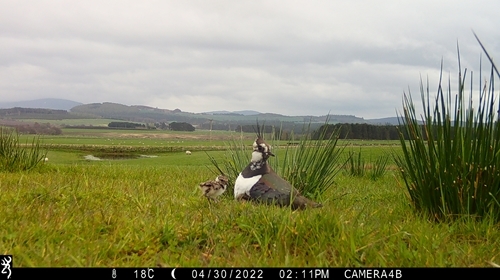
The waders at GWSDF are keeping us busy! Following our previous update, we now have 50 lapwing nests and 12 oystercatcher nests, including a couple of second attempts. We're seeing new nests pop up almost every day. Soon, we'll begin our nest sweeps for returning curlew and are hopeful we'll have several nests to monitor. We've observed at least seven pairs in and around their preferred nesting locations, so with any luck, we'll report a healthy number of fledged curlew chicks soon.
So far, 15 lapwing nests have hatched, with a maximum count of 44 chicks. However, 2023 has proven to be a challenging year for lapwing nests, with 20 failed already (compared to a total of 28 failures in 2022). Of these, 12 have been predated, with a range of different nest predators responsible, including corvids, foxes, and even a pine marten. Despite this, several pairs that fell victim to predated nests have shown signs of re-nesting, and we're hopeful we'll still see plenty of chicks on the ground!

We're fortunate to have seen several colour-ringed birds return and nest, with at least five colour-ringed lapwings recorded on nesting trail cameras. We've also seen at least one colour-ringed curlew and are hopeful we'll record it on a nest soon. These colour rings allow us to record returning waders and contribute to a larger dataset that gives us a unique insight into the history of the waders at GWSDF.
In just a few more weeks, we'll have a final update on the breeding season and hopefully report large numbers of fledged wader chicks. With our iconic wading birds declining in the UK, every chick that fledges is important. Continued monitoring to help understand the threats these species face is vital to their long-term survival.